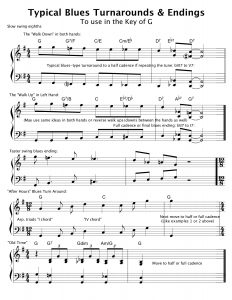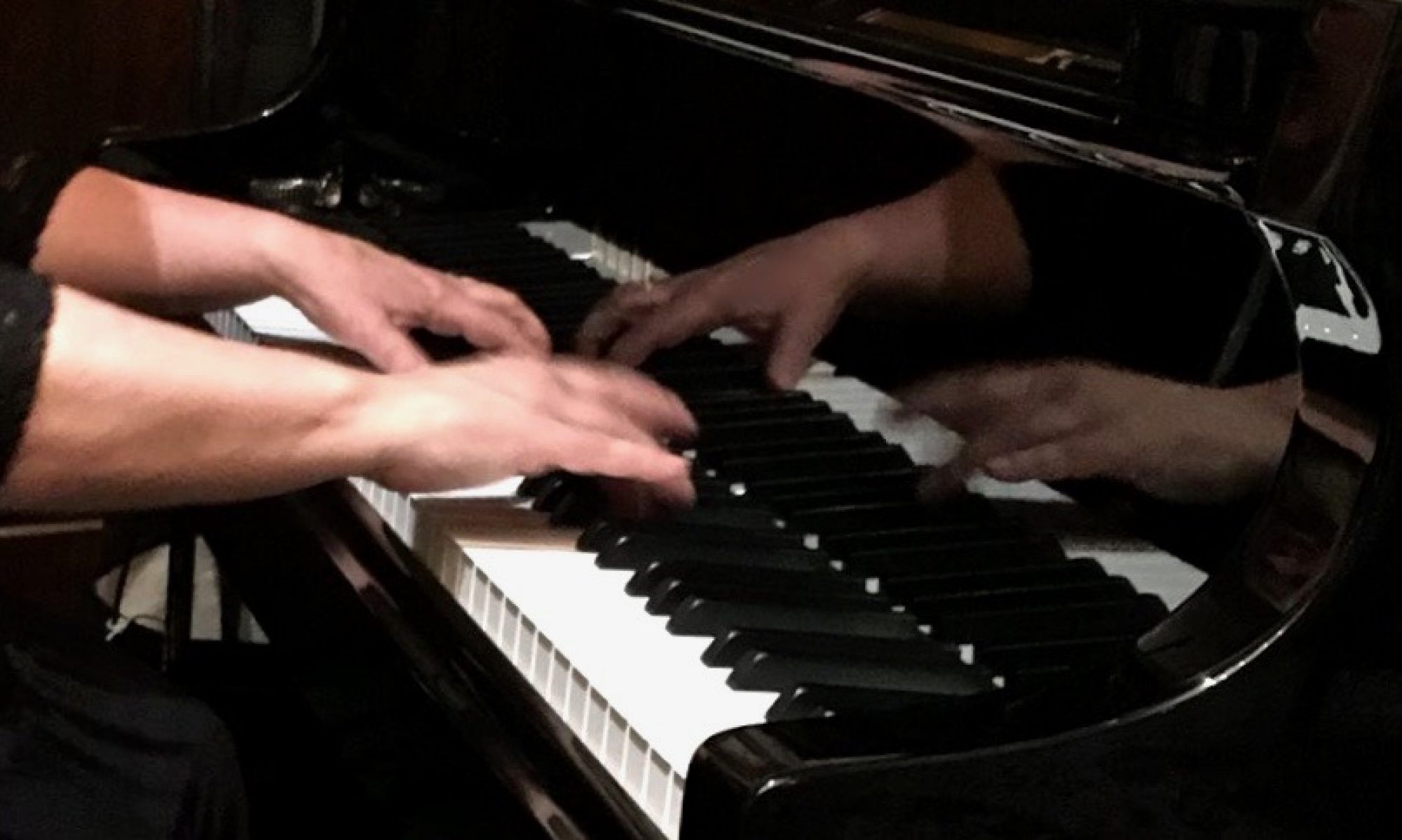It’s over 100º outside, we are all getting a bit bored with “socially distancing”, and let’s face it – today is a great day to learn to play a very slow, hot, blues.
This tutorial came together after giving several of my online piano students tips on the basic 12 bar blues, common blues endings/turnarounds, typical jazz blues substitutions – plus my “covid bubble hubby” music partner and I had just performed a live Zoom concert from our home studio to friends’ living rooms across the country in their own “covid bubbles.”
I extracted a video section of us improvising over Parker’s Mood. The tune is essentially Charlie Parker’s immortalized solo created over the 12 bar blues, later made into a lyric version by King Pleasure.
Lyrics start off with: “I’m feeling low down and blue, my heart is full of sorrow! Don’t know what I’m comin’ to, where will I be tomorrow?”…. which I think perfectly expresses my own mood of late. (On another side note, we celebrate this year 2020 as Bird’s 100th birthday, so we wanted to be sure to include a salute to the renowned alto sax player Charlie ‘Bird’ Parker in our show.)
I’ve included a harmonic analysis (notated after the fact), on the video of my solo over the G blues, sharing tips about both typical and atypical things jazz musicians might do when improvising. Certain chord ideas my partner and I talked about in advance (the major 7th chords at the ending for example), while others were reactions formed on the spot. Jazz artists listening intently may intuitively respond to each other, or at least seemingly so. Good soloists are usually aware there is a basic form or skeleton structure to a tune, perhaps feeling this on a subconcious level. This is achieved usually after musicians put in the practice hours on their own instrument, and have learned a shared vocabulary so they can improvise convincingly over the standard forms like The Blues with other musicians! Below the video are some printed ideas:
Just in case you wish to do further research, here are some RH ideas:
The G Blues Scale: G Bb C Db D F G
The E Blues Scale: E G A Bb B D E (I call this the Other Blues Scale)
Ideas about the Blues in books/audio methods by Debbie Denke: https://www.amazon.com/author/debbiedenkemusic
The Aspiring Jazz Pianist: (pages 54 – 62) Amazing Phrasing – Keyboard (ideas 7, 8, 43, 49) The Complete Church Pianist (Gospel ideas pages 35 – 36)

Here are some common turnarounds in the key of G:



So much Fun! Thank you both. Hot blues, alright.
Glad you enjoyed, Janice!